

Project Brief Introduction:
1.Product:Dried Wood Log Pellet Line
2.Capacity:0.8-1.2 T/Hour
3.TONY Brand 0.8-1.2 Ton /Hour Dried Wood Log Pellet Line Project Process
4.Main Machine: Wood Chipper,Hammer Mill,TONY Pellet MachineTYJ450-Ⅱ-55KW,Pellets Cooler,Packing Machine And Belt Conveyors
5.Total Power: About 180 kw
6.Need Area: About 338 ㎡ L: 26M W: 13M H: 5.151M
Project Layout For Customer:
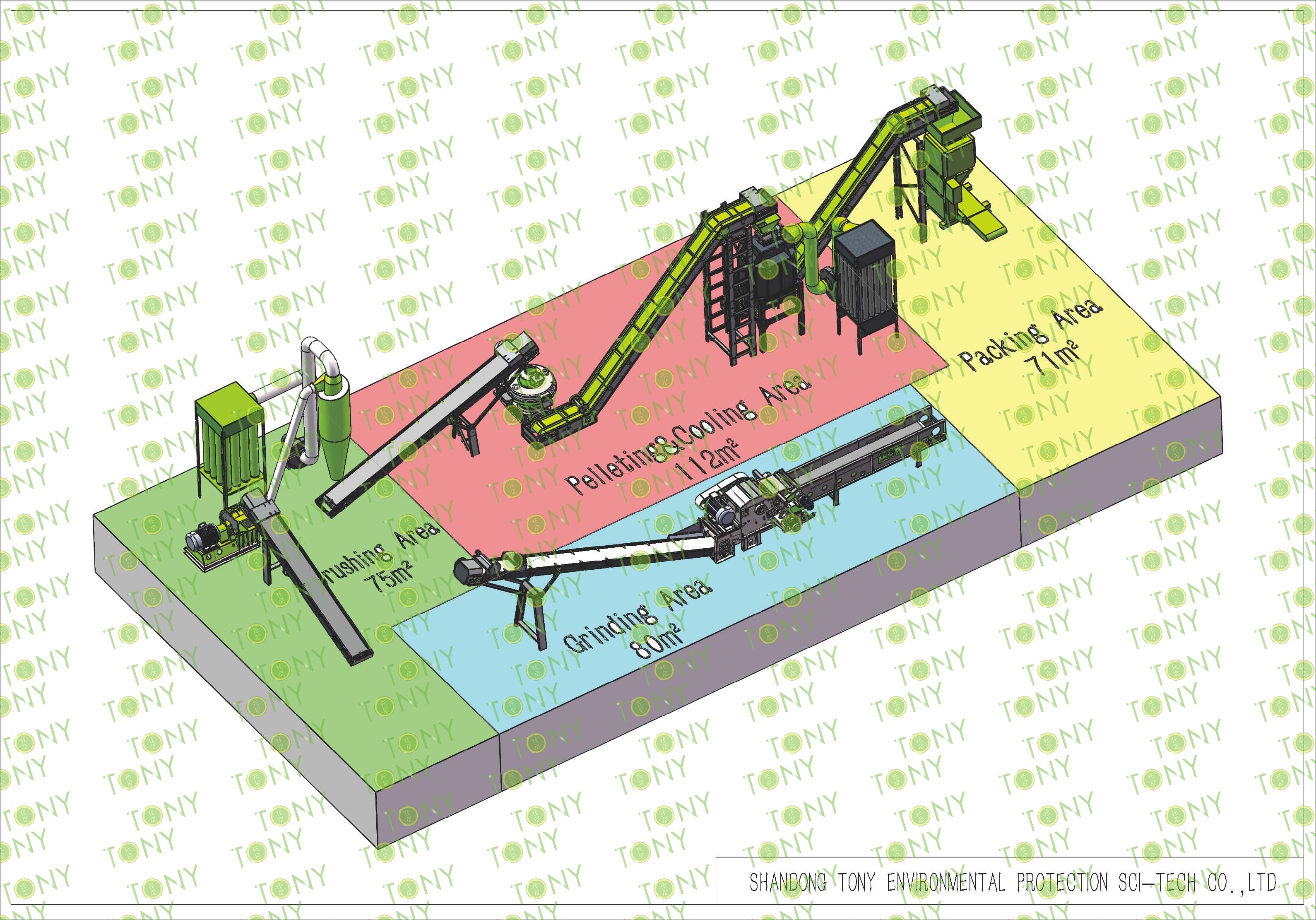
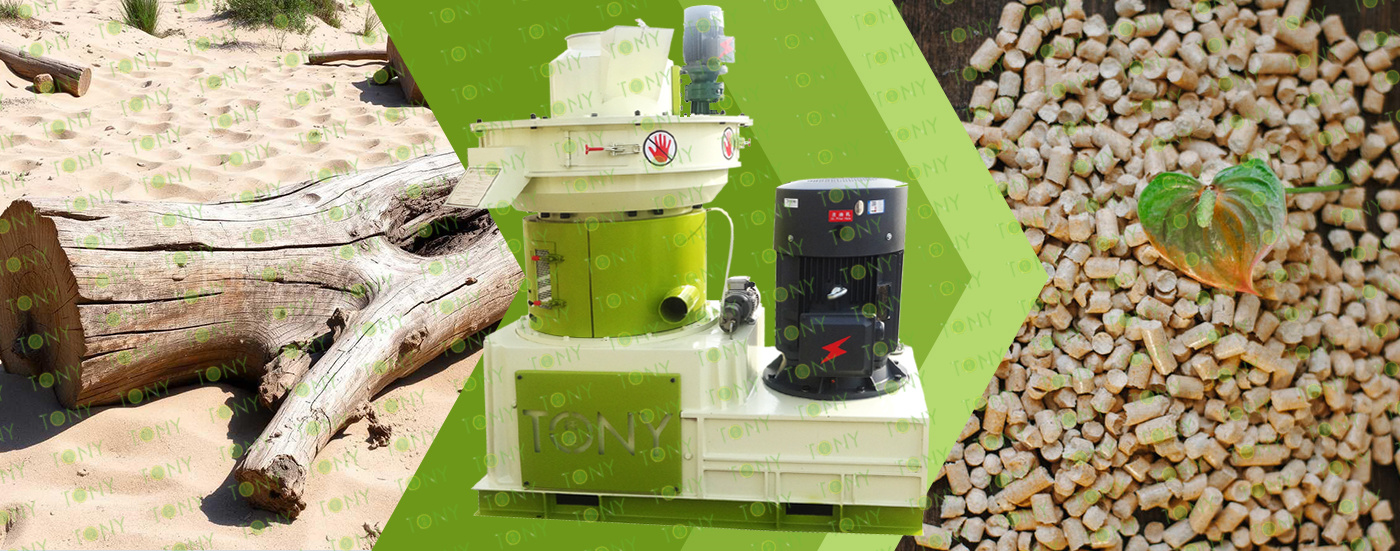
1. The working principle of dried wood log biomass pellet processing equipment
Dry wood biomass pellet processing equipment operates by converting dry wood waste (such as sawdust, shavings, and wood chips) into high-density, regularly shaped biomass pellet fuel through a series of physical processes. This process relies on mechanical extrusion and the natural bonding of lignin, eliminating the need for additional adhesives. The dry wood biomass pellet processing process can be summarized as follows: raw material pretreatment → extrusion molding → post-processing. Because the raw material is ""dry wood"" (with a moisture content typically controlled at 10%-15%), deep drying is not required. Instead, the process focuses on densifying the material through mechanical force and utilizing the heat generated during processing to activate the bonding properties of lignin, ultimately forming stable pellets.
2. Characteristics of dried wood log biomass pellet processing equipment
(1)Strong adaptability of raw materials, achieving efficient resource utilization
Wide range of raw material sources: It can process a variety of dry wood waste, including sawdust, shavings, scraps after wood processing, and forestry waste (such as branches, bark, etc.), and can be processed without complex pretreatment, effectively realizing "turning waste into treasure".
Clear requirements for raw material moisture content: Based on the characteristics of ""dry wood"", the equipment is more suitable for processing raw materials with low moisture content (usually 10%-15%), without the need for additional high-intensity drying (or only simple humidity adjustment), reducing energy consumption and processing costs.
(2)The core equipment (pellet mill) has stable performance and high molding efficiency
Relying on natural adhesives (lignin): The high temperature (100-120℃) generated by extrusion softens and melts the lignin in the wood, without the need to add artificial adhesives, which not only reduces costs but also ensures the environmental friendliness of pellet fuel (no harmful residues after combustion).
High particle density and uniform quality: After high-intensity extrusion between the ring die and the roller, the particle density after forming can reach 1.1-1.3g/cm³. It has high hardness, is not easy to break, and has a regular shape (diameter 6-8mm, uniform length), which is convenient for storage and transportation.
Strong continuous production capacity: Modern pellet mills mostly use automated feeding and speed control systems, which can adjust the speed and pressure according to the characteristics of the raw materials to achieve continuous and stable production. The output of a single device can reach hundreds of kilograms to several tons per hour, meeting the needs of different scales (from home workshops to industrial production).
3. Application scenarios of dried wood log biomass pellet processing equipment
Wood processing plants (such as furniture, wood flooring, and plywood factories) generate large quantities of dry sawdust, shavings, offcuts, and scraps during production. These waste materials have a low moisture content (typically ≤15% after natural air drying) and can be directly processed into pellet fuel through dry wood pellet processing without additional drying, thus achieving a ""waste-to-energy"" internal cycle:
(1)Self-use energy supply: The pellets produced can be directly used in the factory's heating system (such as boilers and kilns), replacing traditional coal and natural gas, reducing energy costs (biomass pellets are typically 30%-50% cheaper than natural gas) and lowering carbon emissions.
(2)Reduced waste disposal costs: Wood waste can be recycled through processing equipment, eliminating the need for waste accumulation and waste incineration (which can be polluting). Excess pellets can even be sold to generate additional revenue."

TONY Brand 0.8-1.2 Ton/Hour Dried Wood Log Pellet Manufacturing Plant can take dried wood, various types of wood - related biomass materials, such as branches, small - diameter logs, and wood shavings, with dried wood as the main raw material. After pretreatment and processing, it is solidified into high - density wood pellet fuel. This fuel is an ideal substitute for coal and oil and plays a role in energy conservation and emission reduction. At present, it has been widely used in regions rich in wood resources.
1. Capacity: 0.8-1.2 Ton/Hour
2. Raw materials: Dried wood logs , branches, small - diameter logs, twigs, etc.
3. Moisture: Dried type, about 10-15%.
4. Application: All kinds of wood - based biomass materials suitable for pellet production.
Suitable customers: Green energy companies, forestry enterprises, and private wood - processing workshops that have advantages in wood raw materials.
5. Finished Pellets Markets: Large power plants ,domestic heating, industrial heating, combustion heat, heating systems, boiler rooms, school canteens, foundry heat sources.

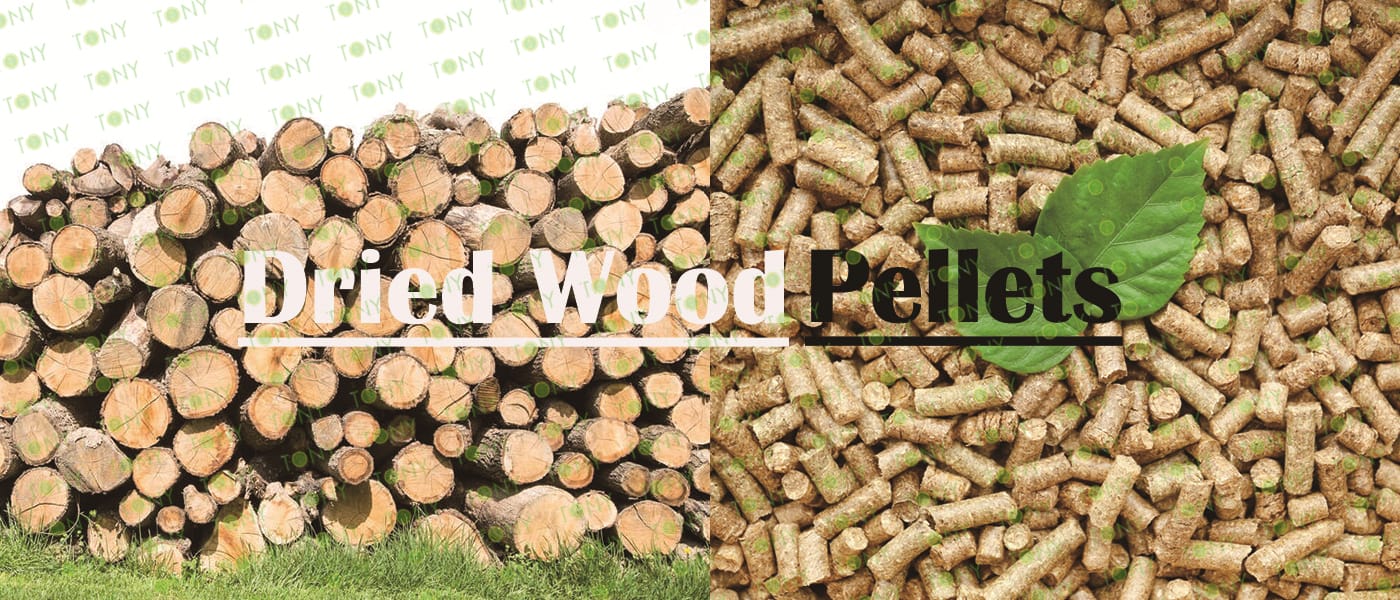
1. Project Name: Dried Wood Log Pellet Production Line
2. Raw Material: All kinds of Dried wood log
3. Moisture Content of Raw Material: 10-15%
4. Capacity: 0.8-1.2 tons per hour
5. Process: Crushing Process - Fine Crushing Process - Pelletizing Process - Cooling Process - Packing Process
6. Main Equipment: Wood Chipper TPQ216 - 55KW, Multifuctional Hammer Mill-TFQ65*55-37kw, TONY Pellet Machine TYJ450-II-55kw, Pellet Cooler, Small Packing Machine and Belt Conveyors

|
How to use the TONY pellet production line to make pellets from dried wood log? The process mainly includes the following steps and equipment: 1. Use TONY wood chipper to cut wet wood log with a diameter of less than 20 cm into wood chips 25 - 55 mm in length. 2. Use TONY multifunctional hammer mill to crush the 25-55 mm wood chips into 8-14 mm sawdust. 3. Use TONY vertical ring die pellet machine to produce pellets with a diameter of 6-8 mm. 4. Use TONY galvanized cooler to cool the pellets from 80-90°C to 20-30°C. 5. Use TONY semi - automatic packing machine to pack the pellets into bags, each weighing 15-50 kg. For more detailed information and quotations, you can contact TONY. TONY can provide all the above - mentioned products at highly competitive prices and with excellent quality. |
|
|||||||||||||||||||||||||||||||||||||||||||||

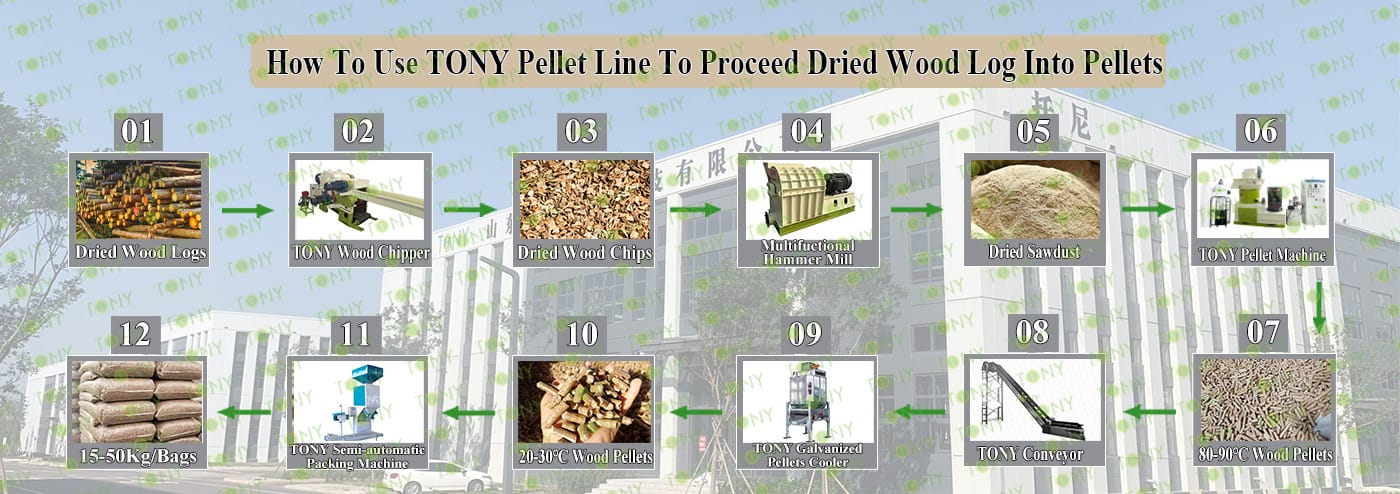

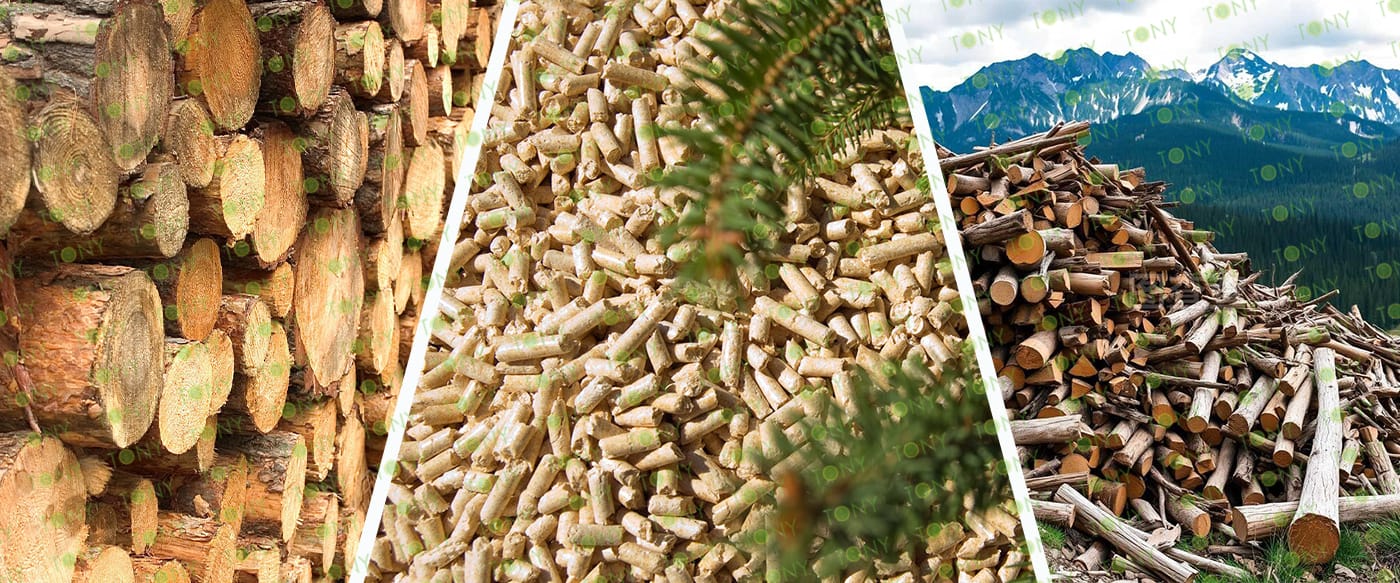


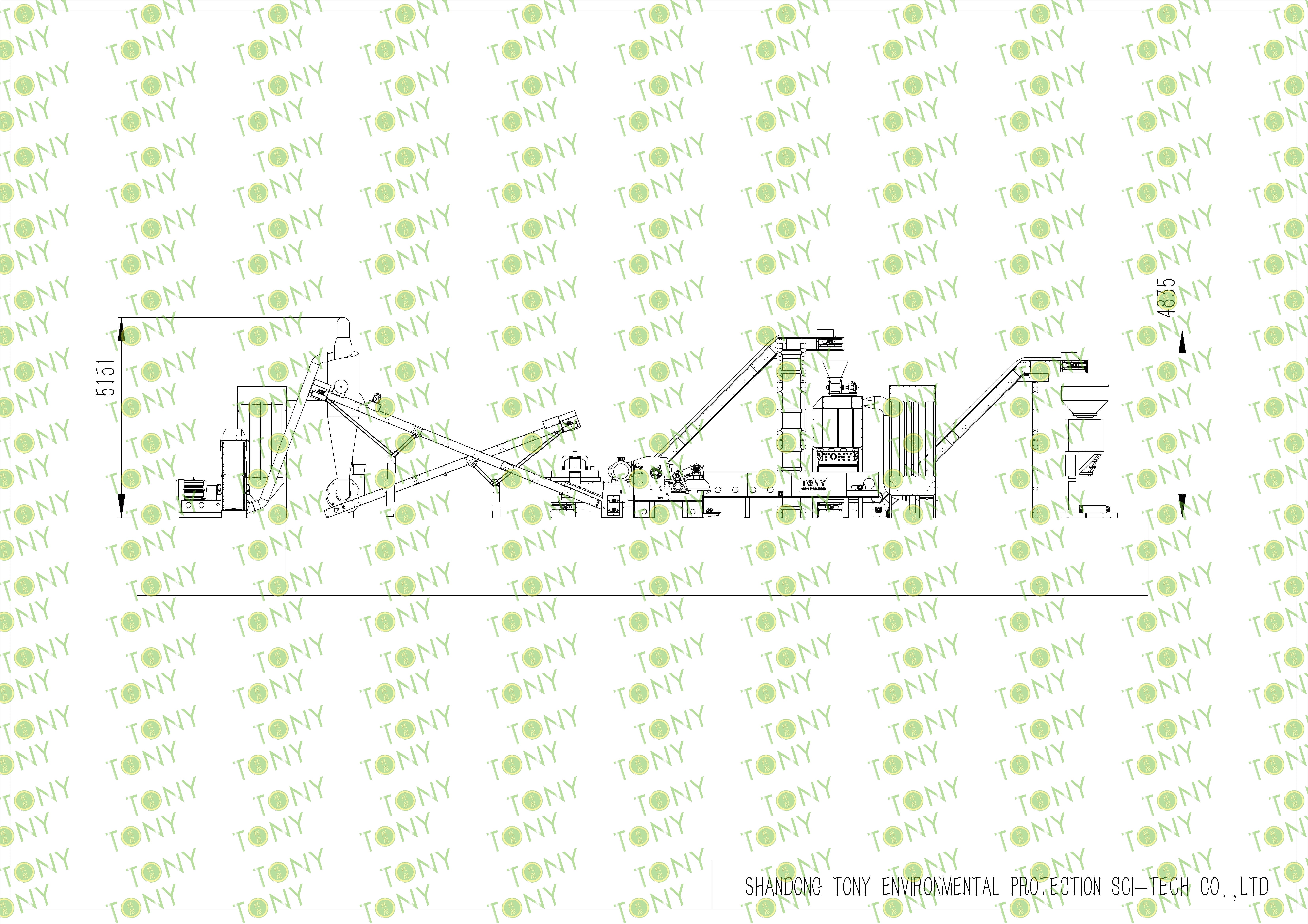
| Next, TONY Will Introduce To You All The Necessary Machinery That Will Be Used For The Whole Pellet Production Line. Some Machines Can Be Custom - Made By Customers According To Different Customers' Detailed Demands. Contact TONY For More Details, Including Quotation And Layout. | ||
 |
 |
 |
| Wood Chipper | Multifunctional Hammer Mill | Vertical Ring Die Sawdust Pellet Machine |
|
1.To Grind Wood Logs φ ≤20cm Into25-55mm Wood Chips. 2.Model: TPQ216-55KW With 2 Baldes*1set 3.Capacity: 4-7Ton/Hour. |
1.To Crush 25-55mm Wood Chips Into 8-14mm Sawdust. 2.Model: TFQ65*55-37KW*1set 3.Capacity: 1-1.5Ton/Hour/Set |
1.To Press Dry Sawdust Into 6-8mm Biomass Pellets 2.Model: TYJ450-II-55KW*1 Set 3.Capacity:0.8-1.2Ton/Hour/Set |
 |
 |
 |
| Galvanized Pellets Cooler | Semi-automatic Packing Machine | Belt Conveyor |
|
1.To Cool Pellets From 80-90℃ Into 20-30℃ 2.Model: TCN-1*1set 3.Capacity:0.8-1.2Ton/Hour |
1.To Pack Pellets Into 15-50KG/Bags. 2.Model: TBF-50*1Set 3.Capacity: 0.8-1.2Ton/Hour |
1.To Transport Wood Chips,Sawdust,Pellets. 2.Width: 50cm*4sets 3.Capacity:Designed With The Whole Line |



1.Wood Chipping Process
A.This process is mainly used to grind the wood logs whose diamater is under 20cm into wood chips with size 25-55mm. The finish wood chips size can be adjustable by changing different sizes of screeners and adding flying knives inside the wood chipper.
B.TONY Brand TPQ216 model with 2 flying blades type
C.Capacity:4-7Ton/Hour.
Main Parts:
(1)TONY's Wood Chipper.
(2)Feed And Discharge Belt Frequency Control To Prevent Card Material
(3)Hydraulic System Control Can Be Used For Thicker Materials
(4)Electronic Control System Allows The Equipment To Be Used Normally
Contact Tony For More Details With Quotation


2.Wood Chips Fine Crushing Process:
A.This process is mainly used to crush 25-55mm wood chips into 8-14mm sawdust.
B.Capacity:1-1.5Ton/Hour.
C.TONY use multifunctional hammer mill TFQ65*55-37KW*1set
Main Parts:
(1)TONY Multifunctional Hammer Mill.
(2)Galvanized Dust Collector.
(3)Sawdust Transportation Fan Blower.
(4)Cyclone With Airlock.
(5)Electrical Cabinets.

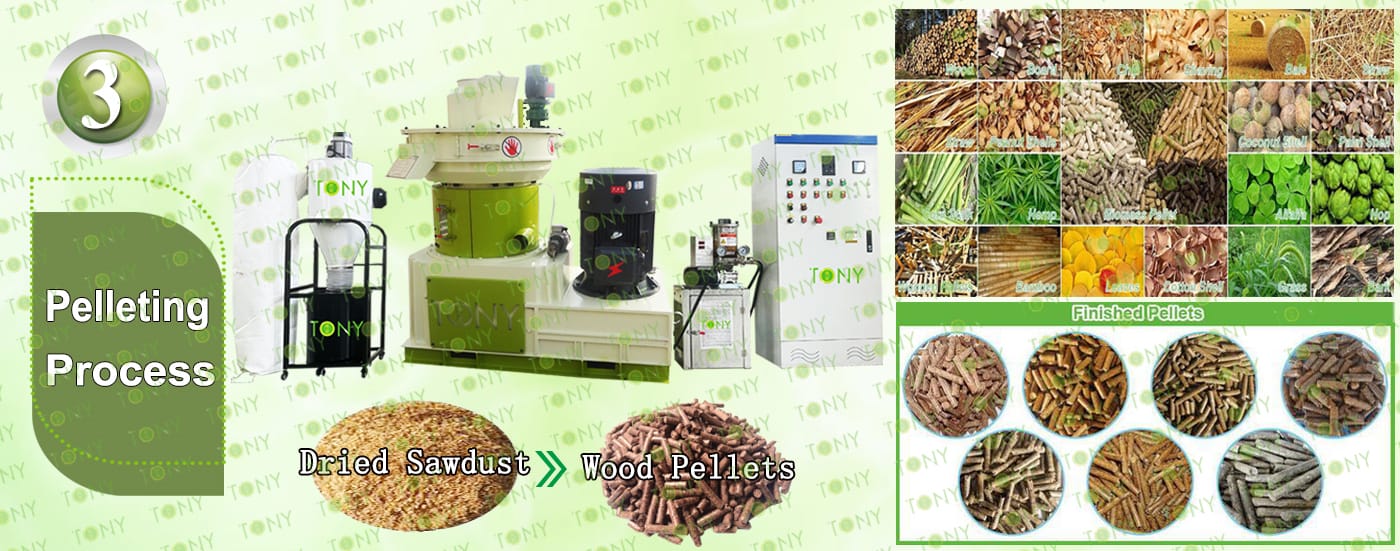
3.Pelletizing Process:
A.This process is mainly used to to product pellets into φ6-8mm.
B.Capacity:0.8-1.2Ton/Hour.
C.TONY Brand Vertical Ring Die Pellet Machine TYJ450-II-55KW*1Sets
Main Parts:
(1)TONY's New Vertical Ring Die Pellet Machine.
(2)Cyclone And Bags Dust Collectors.
(3)Automatic Lubrication System.
(4)Electrical Cabinets.

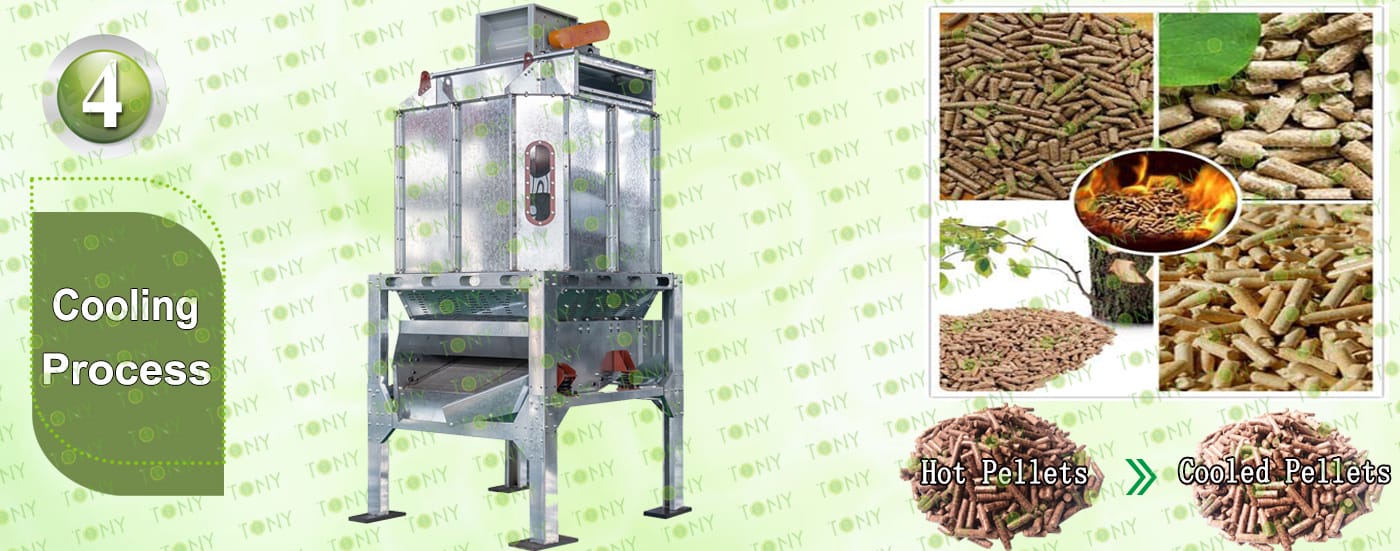
4.Cooling Process:
A.This process is mainly used to cool pellets from 80-90℃ to 20-30℃
B.1Set Of TONY Galvanized Cooler Seperator With Capacity 0.8-1.2Ton/Hour
Main Parts:
(1)TONY's Galvanized Cooler Seperator With Vibrating Screen.
(2)Cyclone And Bags Dust Collectors.
(3) Fan Blower.
(4)Connect Pipes.


5.Packing Process:
A.This process is mainly used to pack pellets into 15-50KG/Bags.
B.1 Set of TONY Semi-Automatic Packing Machine.
Main Parts:
(1)TONY's Semi-Automatic Packing Machine.
(2)Sew Machine, Buyer Can Also Choose Hot Seal Machine For Chosen,To Confirm With Tony For The Price Difference.
(3)Bags Transportation Conveyors.
(4)Feeding Inlet Silo.
(5)Electrical Cabinets.




Processing dry wood into biomass pellets is a promising entrepreneurial venture. Here are its advantages and some key considerations:
1. Low Raw Material Cost:
Dry wood is widely available. Furniture factories, panel mills, sawmills, and other industries generate large quantities of scraps, shavings, and wood chips. In some areas, discarded wood can be obtained free of charge, effectively reducing raw material costs.
2. Stable Market Demand:
Biomass pellet fuel is environmentally friendly and renewable. In the residential sector, it can be used for home heating and is particularly popular in areas with high winter heating demand. Industrially, it can also be used as boiler fuel in factories, farms, and greenhouses. There is also significant demand for biomass pellets in some export markets.
3. Large Profit Margin:
The equipment pays for itself within 3-5 months, significantly increasing the added value compared to directly recycling dry wood.
4. Highly intelligent equipment:
Nowadays, some advanced pellet machines support PLC intelligent control and have the function of starting the entire line with one button. They have a high degree of automation and can generally be operated by two people. The difficulty and cost of human management are relatively low.


1. Stable and High Calorific Value:
Dry wood biomass pellets typically have a calorific value of 4200-4800 kcal/kg, close to that of high-quality bituminous coal (4500-5500 kcal/kg) and significantly higher than straw pellets (3000-3800 kcal/kg). They can meet the calorific needs of various applications, including industrial and residential heating.
2. Complete Combustion and High Utilization:
The pellets have a density of 1.1-1.3 g/cm³ and a dense structure, enabling stable, layered combustion in specialized furnaces. They achieve a combustion efficiency exceeding 85% (compared to approximately 60%-70% for coal-fired boilers), reducing energy waste.
3. Easy Control and High Adaptability:
The pellets have a regular shape (6-8mm diameter, 10-30mm length), and the feed rate can be precisely controlled via an automated feeding system. It is compatible with a variety of equipment, including industrial boilers, household fireplaces, and biomass generators, ensuring easy operation.
4. Wide Range of Raw Material Sources:
The raw materials primarily utilize wood processing waste (wood chips, shavings, and scraps) and forestry waste (branch branches and dead wood). These raw materials are abundant and even freely available in furniture factories, sawmills, and forest areas, eliminating the need to occupy arable land and competing with crop production.
5. Low Processing Cost:
The moisture content of dry wood raw material is typically 10%-15% (no additional drying is required, or simple airing is sufficient). Compared to straw (which often has a moisture content exceeding 30%, requiring high drying costs), this method can save 30%-50% in pre-processing costs, reducing overall production costs."





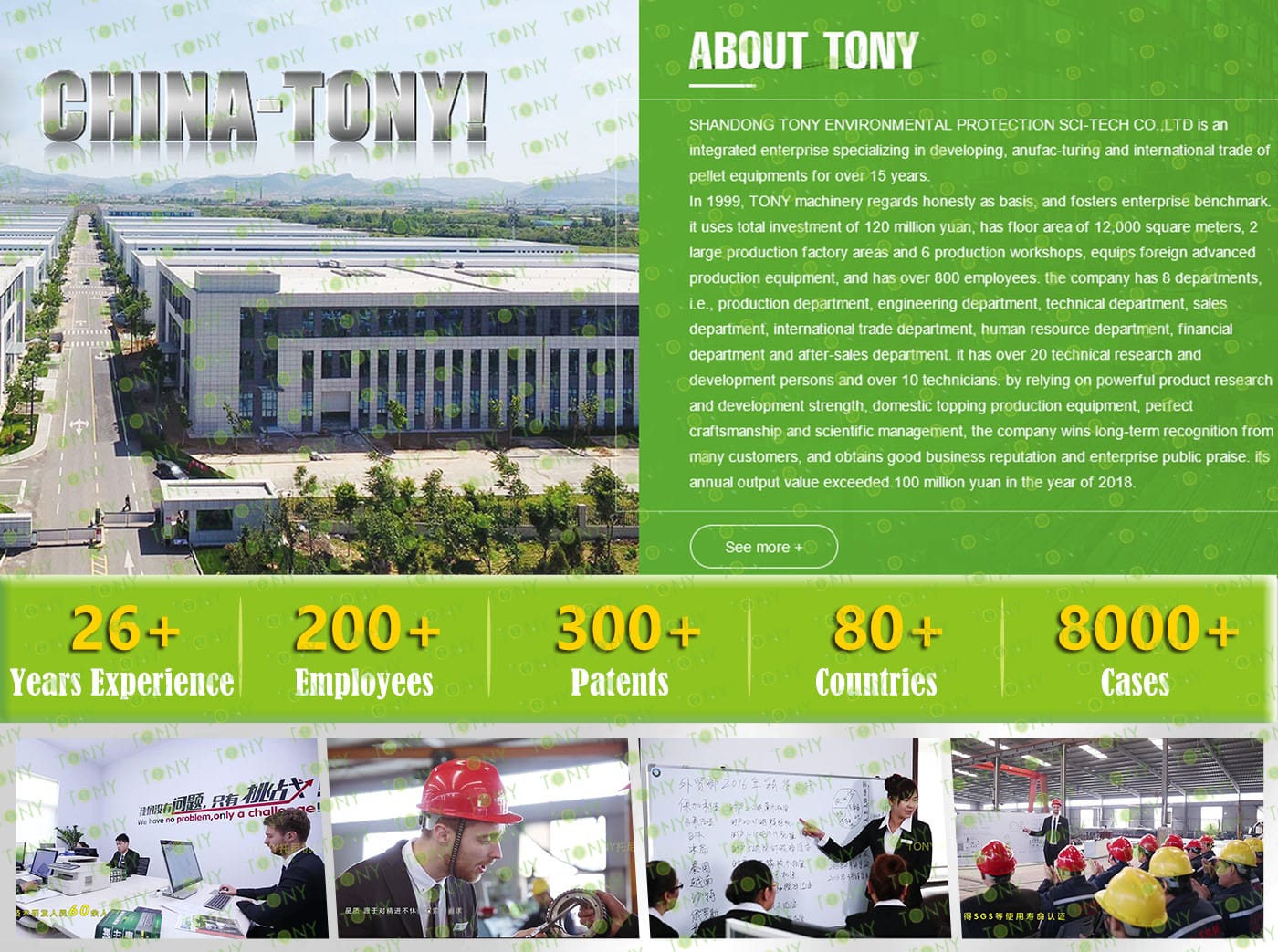
2025 Tony Machinery - All Rights Reserved. Map